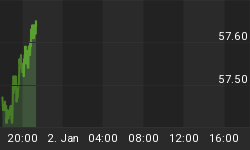Two weeks ago we focused on the longer term forecast covering the history of the Dow since its inception in 1896. This week we'll focus on the more recent historical record, by updating a chart already published several times before:
Two things become instantly clear: the March '09 rally ran into trouble at the end of QE 2, but found renewed vigor with the announcement of operation Twist by the Fed and the Long-Term Refinance Operation (LTRO) initiated by the European Central Bank.
This concerted injection of liquidity into the world financial system resulted in a low volatility environment where price climbs the proverbial wall of worry, closely following the daily and weekly trend (courtesy of OT Trend app):


Lacking an exogenous event altering market participants' perceptions, and in light of current monetary policy, there is no reason why the SPX shouldn't continue it's upward path.
Expecting the markets to go up forever, however, is not the wisest trading strategy, and that's why we will examine a few potential stumbling blocks.
One of them is evident from the monthly chart:

The SPX is getting close to being overbought in this time frame, and a pause/pull-back is to be expected.
In addition, the Q's, which we've successfully used as a leading indicator so far, have reached our monthly target and are likely to encounter stronger resistance going forward:

The DJIA finds itself in a similar position:

And the SPX has immediate overhead resistance as well:

Therefore, should a new G20 rescue deal fail to materialize and propel the indices above their respective resistance levels, a period of consolidation is to be expected. However, we wouldn't push the panic button just yet.
In my Guide to trading the DJIA you will find a much more detailed and complete analysis of what to expect for the remainder of this year.

















